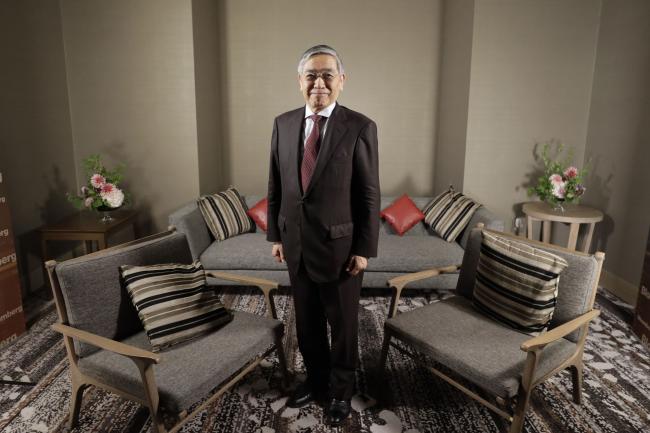(Bloomberg) -- The Bank of Japan kept its monetary policy unchanged while trimming its inflation forecasts, taking a wait-and-see stance ahead of an expected interest rate cut from the Federal Reserve tomorrow.
The BOJ maintained the settings on its yield curve-control program and asset purchases, it said in a statement Tuesday, a result expected by most economists in a Bloomberg survey. It also left unchanged its pledge to keep interest rates extremely low through at least spring 2020. Roughly a third of economists had expected the BOJ to strengthen its commitment to keeping interest rates at rock-bottom levels.
Amid growing expectations that it will need to increase stimulus, the BOJ’s decision likely reflects policy makers’ hopes that markets may already have reacted to expectations of additional stimulus by the Fed and European Central Bank, meaning the yen won’t strengthen much more. A stronger yen would hurt the BOJ’s efforts to stoke inflation.
"It’s not entirely clear how close the BOJ is to taking actual action," said Hideo Kumano, chief economist at Dai-Ichi Life Research Institute and a former BOJ official. "I don’t expect further easing in the immediate future. But the key is the yen. If the yen looks certain to test 100, that would be a likely trigger for the BOJ to take action."
In its quarterly outlook report, the BOJ said risks to inflation and economic activity were both skewed to the downside, with the latter due particularly to developments in overseas economies, including protectionism. The BOJ added language to the report that said it wouldn’t hesitate to expand its stimulus if greater risks to its inflation target materialize.
With global economic growth cooling, much will hinge on U.S.-China trade talks, which are resuming today in Shanghai.
In its updated forecasts, the BOJ effectively said 2% inflation remains out of sight, with core inflation projected at 1.6% in the year ending in March 2022. It trimmed its inflation projection for this fiscal year to 1.0%, while saying inflation is currently rising at around 0.5% year over year, down from 0.5%-1% previously.
The yen touched its strongest level of the day against the U.S. dollar after the BOJ decision. It was trading at 108.65 as of 1:02 p.m. in Tokyo.
The interest rate pledge was a focus of BOJ watchers ahead of this meeting. Some said the central bank would use a change to the language to try to preemptively thwart any yen strengthening likely to result from the Fed’s first rate cut since 2008.
Yet some BOJ officials saw little to be gained from such a move, particularly since it tweaked the language only three months ago, according to people familiar with the matter.
The market stability that followed the ECB’s policy meeting likely gave BOJ policy makers added confidence that they could stand by. The yen weakened after the ECB signaled further stimulus, which indicated investors are taking rate cuts by the ECB and Fed as good signs for the global economy, rather than focusing on interest rate differentials with Japan.
Fed Is Next
It remains to be seen, though, how markets will react after the Fed meeting. A Fed cut of at least a quarter percentage point is widely expected, but a bigger move or a stronger signal of further action ahead could still strengthen the yen.
It is that scenario that had economists predicting the BOJ’s next move would be to add stimulus. Some 77% of economists expect the BOJ’s next policy step to be strengthening stimulus, up from 62% last month, according to a Bloomberg survey.
Governor Haruhiko Kuroda told Bloomberg in June that big stimulus moves are still possible, though some measures would be needed to mitigate side effects. Cutting interest rates and increasing asset purchases are among the options, he said.
Kuroda will hold a news conference starting at 3:30 p.m. in Tokyo.
Policy Recap
- Pledge to keep interest rates extremely low until at least around spring of 2020.
- A rate of -0.1% on some reserves financial institutions keep at the central bank.
- Yield target of about 0% for 10-year Japanese government bonds, with a trading range of about 0.2 percentage point on either side of the mark.
- A target of increasing JGB holdings by about 80 trillion yen ($736 billion) a year, though this target is now secondary to controlling interest rates and the actual pace of purchases has fallen to well below half that rate.
- A guideline to increase holdings of exchange-traded funds by 6 trillion yen a year. Actual purchases vary widely from month to month, depending on market conditions.
